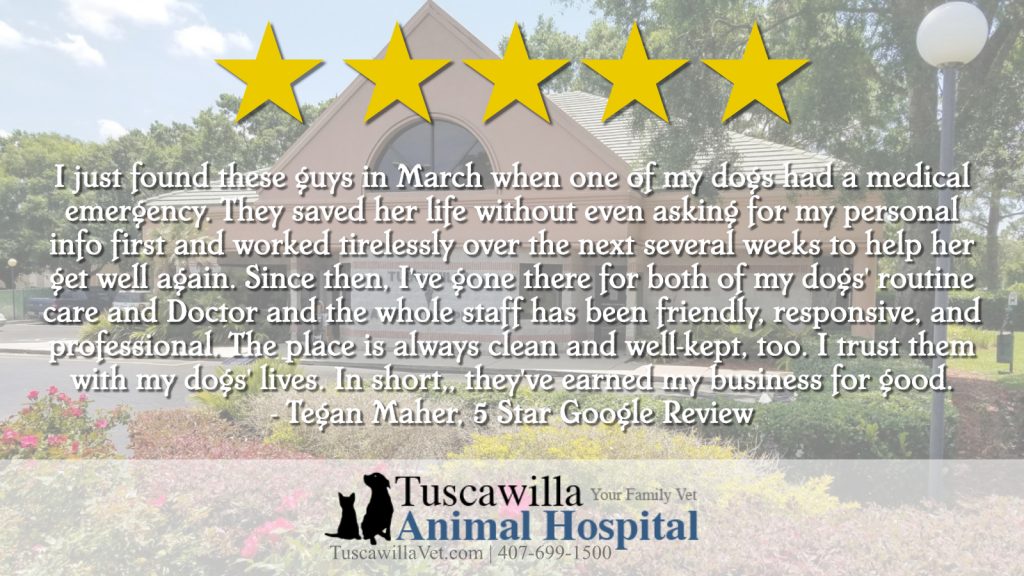How to keep your pets safe in extreme heat to avoid dehydration and heat exhaustion?

How to keep your pets safe in extreme heat to avoid dehydration and heat exhaustion? – Thanks for reading this blog article. We want to ensure your pet lives a healthy long life. Tuscawilla Animal Hospital that proudly serves Winter Springs, Casselberry, Oviedo, Longwood, and the greater Seminole County Florida area wants to share simple ways to keep your pets safe from the effects of extreme heat.
Remember to Stay Cool, Safe, and Hydrated With These Tips on How to Keep Pets Safe in Extreme Heat.
It’s summertime, and that means high temperatures are in store for us here in Florida. But that doesn’t mean you have to spend time with your furry friend inside the house. Here are some tips on how to keep pets safe in extreme heat. Teresa Gherini from AAA said: “We’re urging motorists to avoid leaving pets in parked vehicles during extreme temperatures. Pets can suffer irreparable brain damage or death when left in parked cars, even with the windows cracked.” This is truly scary stuff and we (your local Winter Springs/Casselberry Vet Clinic) don’t want your beloved pet to have any health issues.
Here are some things to consider when leaving a pet in a car during the summertime.
A small dog or cat can die after being left in a car with the windows down only an inch, on a 72-degree day. At 86 degrees, it only takes six minutes for the temperature inside a car to reach 101 degrees — enough to cause the animals inside to die. Many people are simply unaware of this danger.
In a recent research paper titled “Hyperthermia in Dogs Left in Vehicles,” researchers found that the internal temperature of a car with no air-conditioning on a sunny day reached 120 degrees in under 10 minutes. In a 2013 study, “Hyperthermia in Dogs Left in Vehicles, ” researchers found that the internal temperature of a car with no air-conditioning on a sunny day reached 120 degrees in under 10 minutes.

Even on a cool day, a car can quickly heat up to 109 degrees. Never leave your pet in a car on a hot day. Dogs and cats can suffer heatstroke, which can be fatal. For example, according to law enforcement agencies and animal shelters that have investigated incidents of dogs dying in hot cars, the temperature inside a car can rise by 20 degrees in just 10 minutes, and by 40 degrees in 30 minutes. It only takes minutes for a dog’s life to be in danger.
On a 79-degree day, the temperature inside a car with no windows can reach 102 degrees in 10 minutes, and climb to 110 degrees in 20 minutes. That is well above the acceptable temperature range for an infant or child — which is 80 to 85 degrees. Even on milder days, temperatures inside a vehicle can get very hot.
Stay cool, safe, and hydrated is best way to keep pets safe in extreme heat.
Well, it is generally a scorching summer every summer in Florida. So it is safe to say Florida is a place where it stays hotter longer even after the summer officially ends. Keeping your pet safe can be a challenge when temperatures soar to dangerous levels.
So what happens to your pet’s body when it gets too hot? According to the USDA: “The safety of your pets can be affected by heat just as it can for people. Both you and your pet need to be aware of the signs of heatstroke and heat exhaustion and learn what to do if they occur.”
Both heat exhaustion and heat stroke are serious conditions. Heat exhaustion begins with general muscle weakness, sudden excessive sweating, nausea and vomiting, and possible fainting. A heat stroke is when your body’s internal temperature reaches over 103 degrees.
Here are the warning signs that your pet might be suffering from heatstroke/heat exhaustion.
- a headache / dizziness and confusion.
- loss of appetite and feeling sick.
- excessive sweating and pale, clammy skin.
- cramps in the arms, legs and stomach.
- fast breathing or pulse.
- a high temperature above what is considered normal
- being very thirsty.
When it’s too hot and we can barely move, our pets react by having much less enthusiasm to follow through on their exercise and training routines. Instead, we want to create times in the day that are less hot, and more enjoyable for our pets. The less you do trying to force your pet into staying on track, the more likely they are to follow through with the new training or exercise programs in the warmer times of the year.
In the shade, even on a relatively mild day, an object exposed to air that is 95 degrees Fahrenheit will get hot enough. Since heat stress is determined by several factors (such as breed, age, activity, temperature, and humidity), dogs with brachycephalic airways are more susceptible to the effects of high temperatures. Brachycephalic breeds have more body surface area to cool themselves off, thus are unable to cope with high temperatures. So it is best for owners of these dogs to keep them out of the heat and to protect them from the sun.
Popular brachycephalic breeds include English and French Bulldogs, Bull Mastiffs, Boston Terriers, Boxers, Pugs, Shih Tzus, Lhasa apsos, and Pekingese, among others. The term can also be applied to mixed-breed dogs that inherited this trait from brachycephalic ancestors. Persian, Himalayan, and Burmese cats are the most well-recognized brachycephalic breeds of cats.
Is it safe to take my dog out for walks when it is extremely hot outside? – keep your pets safe in extreme heat
Extreme heat can be dangerous for your pet, but it’s important to keep them active, and it’s safe to take them out for walks if you follow these tips. Dogs should be walked in the coolest part of the day, early morning or evening.
Try to stick to shady or paved areas.
Is it safe to take my dog out for walks when the sidewalk on a summer day? I don’t know about you, but I like my sidewalk to be extra nice and cool, while my feet rest safely indoors! ANd you know what – your pet thinks the same way too.
First off, make sure your dog is acclimated to the heat. Take them out during cooler times of the day and give them a little time to get used to the temperature. Give them plenty of cool water to drink. Dogs don’t perspire like we do, and can suffer greatly from dehydration without the owner’s knowledge.
In the midst of a heatwave, it’s important to keep your pet cool and hydrated. Follow these simple guidelines to ensure your pet is safe from the summer heat.
- Stay Cool: Limit your pet’s time outside to 10-15 minutes per day.
- Keep your pet in air-conditioned areas as much as possible.
- Provide a shady area for your pet outdoors with an ice-filled water bowl.
How do you protect your dog from dehydration which involves more than simply giving your dog water regularly? – Keep your pets safe in extreme heat.
In the summer here in Central Florida, it’s important to know how to keep your pets safe from dehydration. This includes more than just giving them water regularly. To help, we’ve compiled some tips to keep your pets cool, safe, and hydrated in extreme heat. Many people put water bowls outside for their dogs. But the ground is so hot, the water in these bowls can get dangerously hot before your dog gets to it.
Keeping a small container of water in the freezer is an inexpensive solution. As soon as you start hearing birds chirping, it’s time to prepare for a hot summer and help keep your dog safe from the heat. Unless you have an air-conditioned house or room in which to keep your pet, keep your dog in a shaded area and away from the hottest part of the day, which is generally in the afternoon between about 2 p. m. and 4 p. m.
In the heat of summer, dogs can get dehydrated quickly. That can lead to heatstroke, which in turn can lead to organ failure and death. This is a serious problem that needs immediate treatment from your veterinarian – call us at Tuscawilla Animal Hospital. 407-699-1500
Remember that it does not take long for a dog to get sick in the sun either. Most heatstroke cases I’ve seen have occurred in dogs who were left outside in an unshaded area for more than 30 minutes. It was 80 degrees and sunny, according to the weather app on my smartphone. Make certain that your dogs should have access to plenty of cool water when the weather gets hot. We recommend having several cool drinking bowls placed around your home.
Thanks for reading this blog article on how to keep your pets safe in extreme heat, this blog article was prepared by the Tuscawilla Animal Hospital.
The Tuscawilla Animal Hospital wrote this article to help you better understand ‘How to keep your pets safe in extreme heat to avoid dehydration and heat exhaustion?’. You might still have questions, feel free to call us and ask our caring staff members who are caring for your pet. Follow us on Twitter, Pinterest, and Facebook now! Remember we love caring for your pet no matter what stage of life he or she is in. Again, thanks for reading this blog article.
